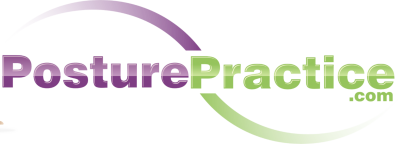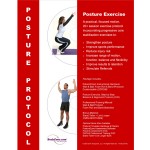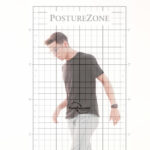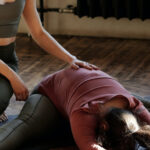Answers to Common Patient Questions
A common question I get from patients is “can my old ankle injury be the root cause of my knee, hip and low back pain now?” As practitioners, we know the answer is YES, but it’s key to be able to explain WHY in terms your patient will understand. Especially if you want the information to “stick” and be a jumping board for lasting change – whether that means following your prescribed rehab program, adding exercise to everyday life or otherwise modifying habits.
I find for patient communications the 5 Posture Principles provide a dynamic framework for answering questions I’m asked on a daily basis. Notice how I weave the principles into my example above of answering a patient’s question.
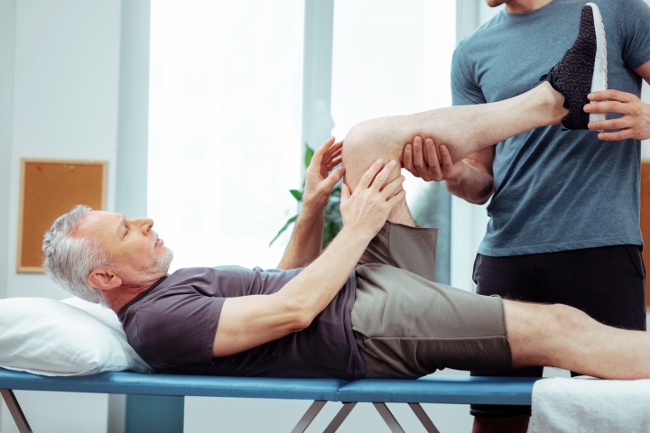
Q: How can my old ankle injury be the root cause of my hip pain now?
A: The body is what’s known as a kinetic chain starting from the foot to the ankle to the knee and working its way up to the chain to the hips, low back and so forth. In a kinetic chain, movement of one joint affects movement of another joint within the kinetic chain.
Remember the song we learned as kids “the knee bone is connected to the hip bone?” That song is right. Everything is connected in the body so if one part of the body is injured or affected then it is sure to affect other parts of the body.
So when someone injuries their ankle, for example a basketball player goes up for a layup and when they come down they invert or roll their right ankle and tear or stretch all the ligaments and tendons surrounding that joint… Or maybe someone was walking and they stepped off a curb wrong and roll their ankle… When that person goes to put weight on that ankle and take a step they notice pain. Ouch!
To avoid that pain they may start to limp in an effort not to put their full body weight on the injured ankle. Due to this adapted motion, the rest of the body now has to compensate and do more work to make up for the injured ankle being protected by a limp.
Just like an alignment on a car, if the car is aligned and working properly the 4 tires will wear evenly. If the car is out of alignment some of the tires will wear faster than others because those tires are working harder, taking on more pressure to make up for bad alignment.
When you have pain due to an injury the body starts to compensate. In this case, due to an ankle injury say the patient is limping and not putting full pressure and body weight on their right ankle, so the left side of the body is doing most of the work.
This puts a lot of stress on the left side causing all those muscles to work harder and get tighter, while the right side is getting weaker. When the body starts to compensate to avoid pain, the body will begin to adapt to those changes. This isn’t good for the body over all because the body is now moving in a unbalanced motion pattern which leads to stress on the muscles, tendons, ligaments, joints and overall nervous system.
When you have an ankle injury and that ankle joint is not functioning properly then the kinetic chain as a whole is not functioning properly. What started as unbalanced motion in the ankle can work its way up the chain to the knee, the hip joint and upward.
The Pain Came Out of Nowhere!
In practice these explanations are super relevant and important. Patients who have never experienced back pain before come in and say “Doc I have this back pain that just started and I don’t know where it’s coming from, I haven’t done anything different.”
Then I notice a scar on their knee due to a recent knee replacement! I explain how the body is connected and how compensation due to pain and the resulting adaptation changes our biomechanics causing a domino affect throughout the body. Often I’ll point out the corresponding demo on one of our posture principle posters and ask they read it before heading into their StrongPosture therapy session.
Contributed by Catherine P. Granzow, DC with Staff Writer. Dr. Granzow is a chiropractor and Certified Posture Exercise Professional.
- At-home patient rehab. 7 Steps to StrongPosture® is the online at-home program for patients that integrates education and exercise designed to blend easily into your workflow. Subscribe to offer the program to your patients & clients >>>
- CE Approved online education. Posture and Balance Assessment, Rehabilitation & Motor Control Exercise >>>
- Complete in-office rehab program. Pro Training Manual, Patient Handouts and more >>>
To learn the StrongPosture® program get the Posture Rehab Exercise Program and take the online CE course. Take it to the next level with CPEP® Posture Specialist Certification!
